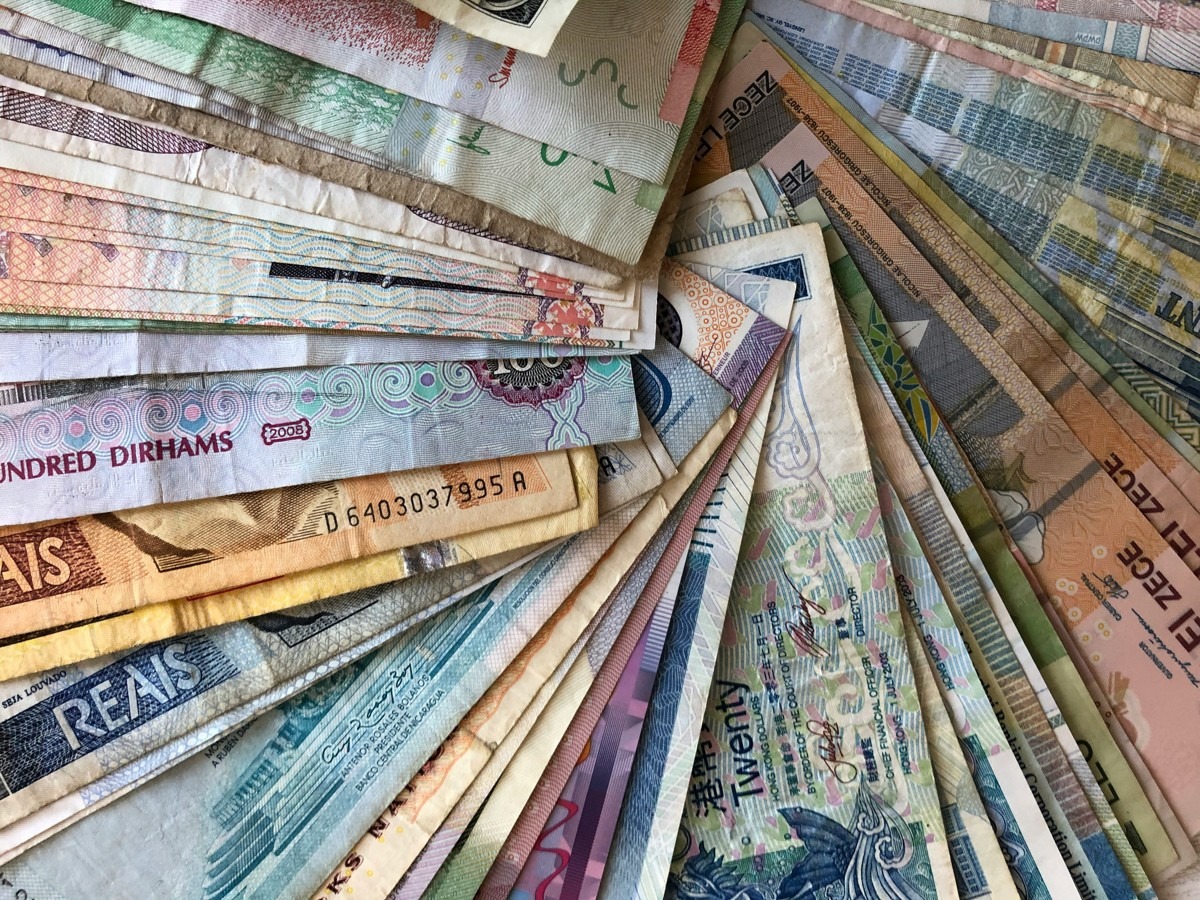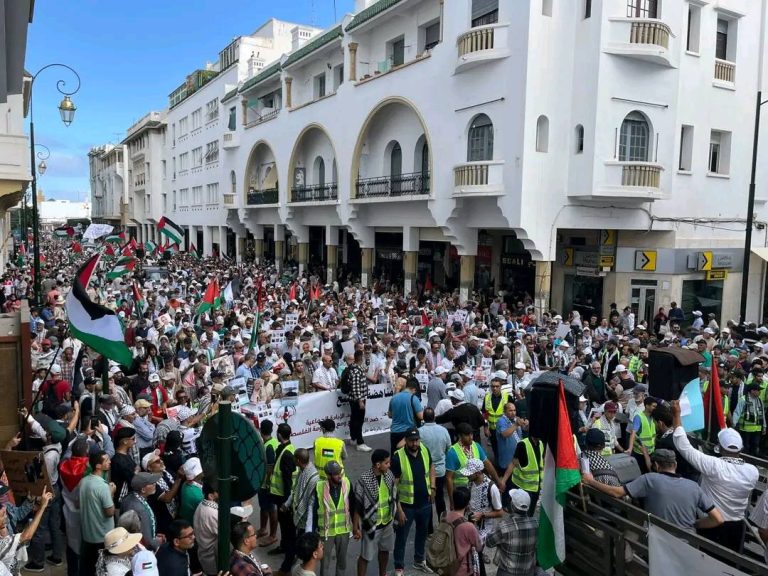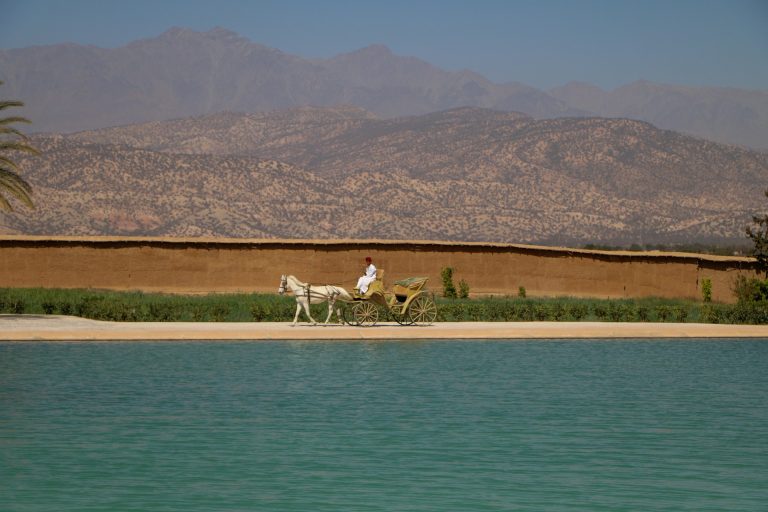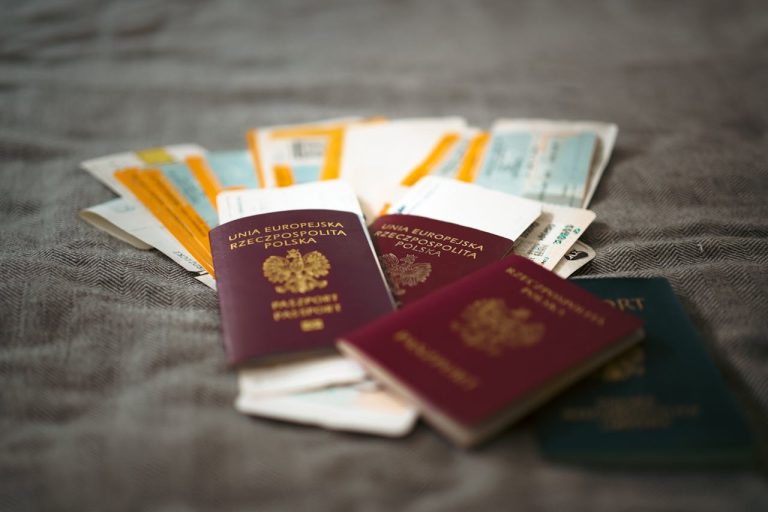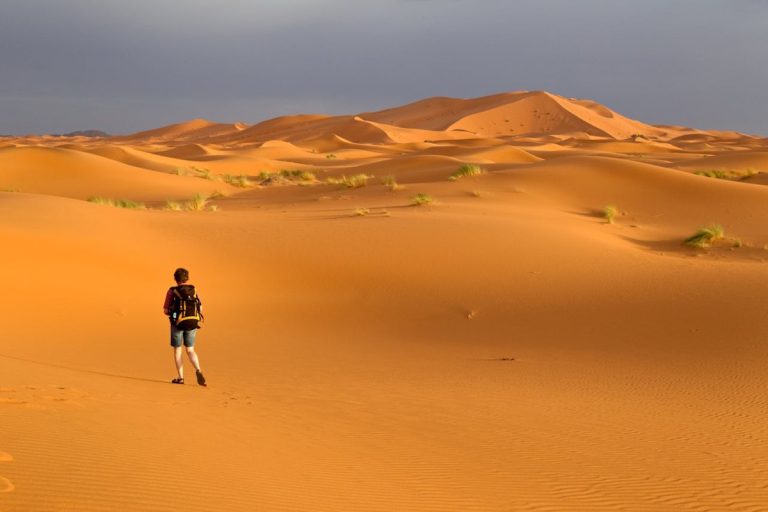Currency and Money Tips for Morocco: Your Essential Guide
Currency and money tips for Morocco may not be the most exciting part of planning your trip, but trust me—after almost 50 years of exploring souks, riads, and remote mountain villages in this wonderful country, I’ve learned that knowing how money works here can make or break your trip. There is nothing that kills the magic of bargaining for a hand-woven Berber rug like realizing you’ve been cheated or, worse, being broke in a medina alley at sunset.
Let me take you through everything you need to know about money matters in Morocco—the kind of practical wisdom that comes from countless ATM hunts, currency exchange negotiations, and yes, a few expensive mistakes along the way.
Understanding the Moroccan Dirham: Your Gateway to Local Commerce
The official currency here is the Moroccan Dirham (MAD), and you’ll see it written as “DH” or “Dhs” throughout the country. One dirham is divided into 100 centimes, though you’ll rarely encounter them in daily transactions anymore. The dirham is a closed currency, so you can’t get it before going to Morocco or take it out when you leave. At first, this limit may seem like a hassle, but it actually protects against currency speculation and keeps the dirham fairly stable.
The exchange rate is about 10–11 MAD to 1 USD and 11–12 MAD to 1 EUR as of late 2024, but these rates change every day. During my daughter’s first visit from university abroad, she found herself mentally converting every purchase back to euros, which drove her slightly insane and significantly reduced her enjoyment. My advice? Do a rough mental calculation once—100 dirhams equals roughly 10 dollars or euros—and then just think in dirhams. It’s surprisingly liberating.
The coins come in denominations of 1, 2, 5, and 10 dirhams, while banknotes range from 20 to 200 dirhams. You’ll want to keep smaller denominations handy—breaking a 200-dirham note for a 15-dirham taxi ride often results in theatrical sighs and claims of having no change (whether true or not is another matter entirely).
ATM Availability and Banking Infrastructure Across Morocco
Here’s where Morocco genuinely impresses: ATM availability has expanded dramatically over the past decade, especially in major cities and tourist destinations. You’ll find ATMs (called “guichet automatique” in French) from major banks like Attijariwafa Bank, BMCE Bank, and Banque Populaire scattered throughout Marrakech, Casablanca, Fes, Tangier, and other urban centers. Most operate 24/7, though I’ve learned to avoid late-night withdrawals in less touristy neighborhoods—not because of safety concerns, but because getting help if the machine malfunctions becomes infinitely more complicated after hours.
The machines typically offer instructions in Arabic, French, and English, and most accept major international cards (Visa, Mastercard, and Maestro). However—and this is important—credit card usage at ATMs sometimes proves trickier than debit cards. Many Moroccan ATMs prefer debit transactions, and I’ve watched confused tourists cycle through three machines before finding one that accepts their Visa credit card for a cash advance.
Withdrawal limits vary by bank but generally range from 2,000 to 5,000 dirhams per transaction. My strategy? To cut down on transaction fees, I always take out the most money possible and then immediately hide it in several places on my body. Call me paranoid, but after guiding tours for two decades, I’ve developed… let’s call them precautionary habits.
In smaller towns and rural areas, ATM accessibility becomes spottier. During a research trip through the Atlas Mountains last spring, I found exactly one functioning ATM in the entire Ourika Valley—and it ran out of cash on a Friday afternoon (banks don’t restock until Sunday). The locals weren’t surprised; apparently, this happens regularly during peak tourist season. Villages like Imlil, Todra Gorge, and parts of the Sahara might have one ATM, or none at all. Always carry extra cash when venturing beyond major cities.
Currency Exchange: Navigating Rates, Locations, and Hidden Costs
Currency exchange in Morocco operates through several channels, each with distinct advantages and disadvantages. Airport exchange bureaus offer convenience but notoriously poor rates—I’m talking 5-10% worse than what you’d get in the city. They are aware that you are a captive customer in need of a taxi fare. If you must exchange at the airport, get just enough for immediate expenses (maybe 200-300 dirhams), then head to better options once settled.
Official exchange offices, called “Bureau de Change,” provide much better rates, and you’ll find them throughout city centers and tourist areas. They are real businesses with licenses that make their current rates easy to find. The rate difference between various bureaus is usually minimal—maybe 0.10 MAD per dollar—so don’t exhaust yourself hunting for marginally better deals. What matters more is avoiding the black market entirely. Yes, someone might approach you in the medina offering “special rates”—politely decline. The dirham is tightly controlled; illegal exchanges can result in confiscated currency and serious legal complications neither you nor I want to experience.
Banks also exchange currency, though the process involves more paperwork and longer waits. I once spent forty-five minutes in a Fes bank branch while the teller meticulously recorded my passport details in three different ledgers. This is the true essence of Moroccan bureaucracy! But banks do offer competitive rates and provide official receipts, which you’ll need if you want to exchange leftover dirhams back to your currency when departing (you can convert up to 50% of what you originally exchanged, with documentation).
The best exchange rates in Morocco typically come from ATM withdrawals using debit cards with no foreign transaction fees. I use a card specifically designed for international travel—it reimburses ATM fees and charges no conversion markup. This effectively provides me with the interbank exchange rate, outperforming any bureau or bank counter by a significant margin. Check with your financial institution before traveling; many now offer similar products.
Credit Card Acceptance: The Reality Behind the Plastic
In Morocco, using a credit card is a strange mix of modern convenience and traditional cash culture. Most high-end riads, international hotel chains, upscale restaurants, and established tour operators accept cards. Usually, they accept Visa and Mastercard, but occasionally they also accept American Express (though Amex acceptance is still limited). Usually, these places use modern payment terminals that work well.
However, the reality is that cash remains the preferred payment method in Morocco, particularly in medinas, souks, local restaurants, taxis, and any place where authentic experiences occur. That incredible family-run restaurant, where tagines simmer for hours in clay pots, only accepts cash. Cash only. The talented leatherworker whose grandfather taught him the craft? Cash only. The taxi driver who knows shortcuts through Marrakech’s labyrinthine streets? The taxi driver should insist on receiving small bills, not your crisp 200-dirham note.
I’ve noticed younger, more tourist-oriented businesses increasingly accepting cards, but don’t assume. I experienced this firsthand during a particularly memorable dinner in Essaouira. The restaurant menu mentioned nothing about payment methods (they rarely do), the meal was spectacular, and when the bill arrived, I confidently produced my credit card. The owner, a delightful elderly man who’d entertained us with stories all evening, looked genuinely apologetic: “Cash only, madame.” Cue an anxious sprint to the nearest ATM while my husband remained as collateral. We laugh about it now… mostly.
Also worth noting: when cards are accepted, merchants may add a surcharge—typically 2-5%—to cover their processing fees. This practice may not always be clearly advertised upfront, so it’s advisable to inquire before making a significant purchase. And always, always choose to be charged in dirhams rather than your home currency when given the option. “Dynamic currency conversion” sounds helpful but actually costs you significantly more through unfavorable exchange rates.
Essential Money Management Strategies for Moroccan Travel
After years of experience (and yes, some costly mistakes), I’ve developed a money management system that’s served me remarkably well. First, diversify your money sources—never rely entirely on cards or entirely on cash. I typically carry two different debit cards from separate banks (in case one gets demagnetized, lost, or blocked), one credit card for emergencies, and multiple stashes of cash in various denominations.
Speaking of cash distribution: never keep everything in one place. I learned this from an elderly merchant in the Fes medina who, upon learning I was a travel guide, pulled me aside and whispered urgently about pickpockets. Now I keep some cash in my day bag, some in a hotel safe, some in a money belt (yes, they’re unfashionable, but they work), and emergency funds hidden in a separate luggage compartment. Is this paranoid? Perhaps. Has it saved me multiple times? Absolutely.
Budgeting for Morocco requires understanding that prices vary wildly depending on context. A mint tea costs 5 dirhams at a local café but 30 dirhams at a tourist restaurant overlooking Jemaa el-Fnaa. A taxi from the airport should run 150-200 dirhams, but some drivers quote 500 to unsuspecting tourists. Your daily budget might range from 300 dirhams (staying in hostels, eating street food, using public transport) to 3,000+ dirhams (luxury riads, fine dining, private drivers). Most comfortable mid-range travelers budget around 800-1,200 dirhams daily, which covers decent accommodation, adequate meals, and activities with some bargaining power.
Keep small change accessible at all times. I maintain a dedicated coin purse with 1, 2, and 5 dirham pieces plus small bills for tipping, which is customary here. Bathroom attendants expect 2-5 dirhams, restaurant servers appreciate 10-15% (check if service is already included), hotel porters earn 20-50 dirhams depending on service level, and tour guides typically receive 100-200 dirhams for full-day experiences. These small gestures matter enormously in a service-oriented economy.
Practical Tips for Different Moroccan Destinations
The financial considerations in Marrakech are significantly different from those in the Sahara or coastal towns. Marrakech bristles with ATMs—I counted seven within a five-minute walk from Jemaa el-Fnaa last week—and most accept international cards reliably. Exchange offices cluster around tourist areas, competing for business. Cards work in many restaurants and shops, though souks remain stubbornly cash-dependent.
In Fes, the medina’s twisting lanes hide fewer ATMs, and those that exist sometimes run out of cash during peak season (usually March-May and September-October). I once witnessed a minor panic when the only ATM near Bab Boujloud stopped working on a Friday afternoon—dozens of tourists suddenly realized they’d underestimated their cash needs for the weekend. Exchange offices near the medina gates offer reasonable rates, but venture deeper inside and you’re back to cash-only territory.
Chefchaouen, that stunning blue city in the Rif Mountains, has limited ATM options—maybe three or four functioning machines for the entire town. During my last visit, two were completely out of service, and the third had a line snaking around the corner. Arrive with sufficient cash or face potential disappointment. The same applies to Essaouira, where ATMs exist but often malfunction from salty sea air (I’m theorizing here, but it genuinely seems to be a pattern).
The Sahara Desert presents special obstacles. Towns like Merzouga and M’Hamid have one or two ATMs at best, and they’re notorious for breaking down or running empty. Cash is absolutely essential—no cards accepted at desert camps, and certainly none in the dunes themselves. Plan ahead and take out a lot of money before you go into the desert. For a two- to three-day trip to the desert, I usually suggest bringing at least 1,500 to 2,000 dirhams per person. This will cover lodging, food, camel rides, tips, and emergency funds.
Bargaining, Souks, and the Art of Financial Negotiation
Understanding money in Moroccan souks necessitates acknowledging that stated prices often serve as opening maneuvers in a friendly negotiation dance. This isn’t dishonesty—it’s cultural tradition, expected and even enjoyed by both parties. Is the carpet priced at 3,000 dirhams? The seller expects to settle around 1,500-1,800 dirhams after some theatrical back-and-forth involving mint tea, stories about his grandmother’s weaving techniques, and your expressed concerns about luggage weight.
I’ve developed a simple approach: I research approximate fair prices beforehand (ask your hotel staff or local friends), start my counteroffer at about 40-50% of the asking price, and negotiate genuinely but respectfully. If we can’t agree, I smile, thank them, and start walking away—often the magic moment when suddenly the price becomes more flexible. But I only walk away if I’m genuinely willing to pass up the item. Bluffing feels dishonest, and merchants possess an uncanny ability to read sincerity.
Cash obviously facilitates better bargaining than cards. Pulling out a credit card signals wealth and reduces your negotiating leverage dramatically. Small bills work especially well—offering exact payment sometimes secures additional discounts since the merchant doesn’t need to scramble for change.
Safety, Security, and Protecting Your Funds.
Money safety in Morocco requires reasonable precautions without paranoia. Morocco is generally quite safe for tourists, but opportunistic theft does occur, particularly in crowded spaces like trains, buses, and busy souks. Although I haven’t personally encountered any significant issues, I always remain vigilant.
Use ATMs during daylight hours in well-trafficked areas. Stand close to the machine, shield the keypad when entering your PIN, and immediately secure your cash before walking away. If someone approaches offering “help” with the ATM, politely decline—this occasionally serves as a distraction for pickpocketing accomplices.
Avoid flashing large amounts of cash publicly. When paying for something, I discreetly extract the necessary bills from my secure location rather than opening a wallet bulging with money. When I go to restaurants, I figure out how much things will cost ahead of time and only bring a little more than I need, keeping a lot of money safe somewhere else.
Hotel and riad safes provide reasonable security for passports, extra cash, and backup cards. However, I’ve known safes to malfunction (hotel staff can usually open them, though this requires patience). Consider dividing valuables—some in the safe, some on your person, and some hidden in luggage. Yes, the suggestion seems excessive, but it ensures one mishap doesn’t derail your entire trip.
Notify your bank and credit card companies before traveling. Many financial institutions now use sophisticated fraud detection algorithms that automatically flag Moroccan transactions as suspicious and freeze accounts. I’ve guided countless tourists through the frustrating experience of calling banks from Moroccan phone numbers, navigating international customer service systems, and waiting hours for account reactivation. A simple pre-travel notification prevents this headache entirely.
Converting Back: What to Do with Leftover Dirhams
As your Moroccan adventure concludes, you’ll likely have remaining dirhams. Currency exchange when leaving Morocco follows specific rules. You can legally reconvert up to 50% of the amount you originally exchanged into dirhams, but only with proper documentation—those exchange receipts suddenly become important. Banks and exchange bureaus at airports handle reconversion, though rates are predictably poor.
Personally? I usually don’t bother reconverting unless I have substantial amounts remaining. Instead, I spend the remaining cash on airport souvenirs, snacks, or argan oil products (excellent gifts and reasonably priced at the airport). Or I simply keep the dirhams for my inevitable return—because Morocco has a way of calling you back, trust me on this.
Some travelers try donating leftover small change to airport charity boxes or leaving generous tips for hotel staff. Both feel more satisfying than accepting unfavorable reconversion rates for minimal amounts. Just ensure you’ve converted enough for last-minute expenses; the post-security airport area accepts only dirhams at most vendors.
Frequently Asked Questions About Currency and Money in Morocco
Final Thoughts: Embracing Financial Flexibility
In Morocco, learning about money and currency goes from being a simple need to a key part of really experiencing this wonderful country. You do need to make plans, get ready, and stay alert. But don’t let money worries get in the way of the wonderful things that are going to happen to you.
I think about money in Morocco the way I think about learning essential Arabic phrases—an initial effort that pays continuous dividends throughout your journey. Master the basics, maintain reasonable flexibility, and you’ll navigate smoothly whether bargaining for spices in a Marrakech souk, paying for mint tea overlooking the Mediterranean in Tangier, or settling accounts at a family-run guesthouse in the Atlas Mountains.
Morocco values both being ready and being able to adapt. Occasionally the ATM doesn’t work, and you need to adjust plans. Negotiations can sometimes unfold unexpectedly. You may sometimes pay more than expected, but if that extra amount helps a local family, is it really overpayment? These ambiguities form part of Moroccan travel’s beautiful complexity.
So pack wisely, notify your banks, bring multiple payment options, keep cash secured in various locations, and approach money matters with the same open, curious mindset you’d bring to tasting tagine or exploring ancient medinas. Morocco is calling—and now you’re financially prepared to answer with confidence.
Safe travels, or as we say here, “bslama” (go with peace). And when you’re sipping mint tea in a centuries-old riad, wallet comfortably secured and bills paid without stress, you’ll appreciate why I insisted you read this entire guide. Trust me—I’ve been there, literally thousands of times, and getting the money part right makes everything else so much sweeter.

